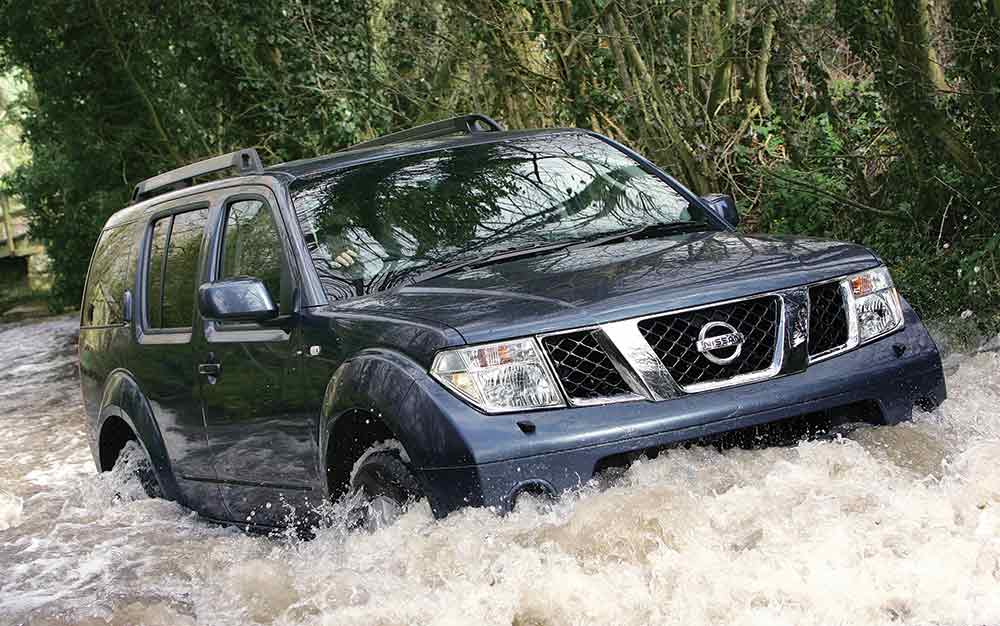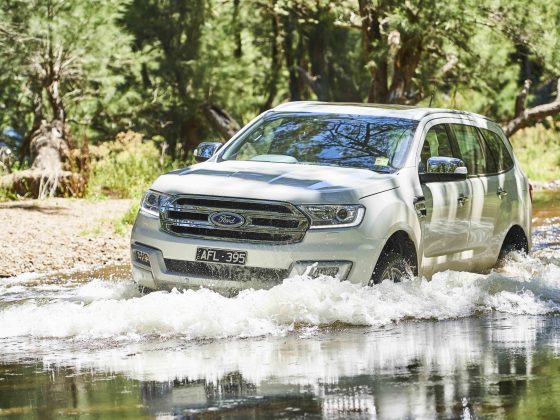Introduced in 2005, the R51 Pathfinder was Nissan’s answer to the Toyota 4Runner and Mitsubishi Challenger in the four door mid-size 4X4 category. The Pathfinder name began in the mid to late 80s. The R51’s immediate predecessor the R50 was available from 1995 and offered a part time 4X4 system and 3.3l V6 engine, with the part time system swapped for the All-Mode 4WD system in 1999. The R51 upped the ante with the choice of 4.0l V6 petrol and 2.5l turbo diesel engines.

The R51 Pathfinder was never the most powerful, quickest, roomiest or most optioned up 4X4 around, but it provides a strong backbone and solid drive train. Safety was well-addressed with ABS, front airbags, and on the higher spec models’ electronic stability control and traction control and curtain airbags featured.
Built in Spain, the earliest R51 Pathfinders did have some build control issues that were sorted with later production.
Mechanical
The 2.5 litre YD25 turbo diesel engine is reported to return around 10 to 11 litres per hundred kilometres, although Nissan claims 8.5 to 9 litres per hundred. The auto transmission assists in the drinking department…the manual is the pick for the miser.
Prior to the 2010 update, the all-important figures were 128kW@4000rpm and 403Nm@2000rpm, later upgrading to 140kW@4000rpm and 450Nm@2000rpm. These figures are on par with other vehicles in the class, not a bad thing.
The YD25 engine is quite reliable, but there is a transmission cooler that can fail by dumping coolant into the gearbox, which never goes down too well unless you like tow trucks. Likewise, there’s a heat exchanger between the inlet manifold and the EGR valve, and if it ruptures, goodbye engine. Inexpensive aftermarket fixes can bypass both of these problem areas.
The ST and ST-L models came with manual transmissions but could be optioned to a 5 speed auto. The Ti model has the 5 speed auto standard whereas the top-of-the-range Ti 550 with the 3.0l turbo diesel features a 7 speed auto. The transmissions are all well suited to the task, however the manual’s clutch isn’t up for a long lifetime especially if towing.
Suspension
The suspension is fully independent with double wishbone front and multi-link rear. Reports are that the rear isn’t up for much in the way of load carrying, with many people who tow upgrading with polyair springs or a spring upgrade from TJM or Old Man Emu by ARB. As 4X4s, Pathies certainly hold their own on typical rutted fire trails, desert and beach, and check out the video below for some Aussie rock crawling. Against most competitors, the suspension is soft and compliant giving a more comfortable ride than the 4Runner especially, great for those long highway stints and high-speed dirt.
Everything under the body is well tucked up, underbody clearance isn’t so special though-bash plates are cheap and effective insurance, especially for the sump!
Interior
In 7-seater format, the rearmost seats could fit a typical sized adult with relative comfort-something rare for third row seats! Folded out of the way the cargo bay is ample for a small family-room for the fridge, stove, tent and a bit of personal gear. Fold the middle row down as well and anyone short of 7’ tall should find a place to sleep! The interior is larger than the 4Runner, despite not being much larger on the outside.

Exterior Accessories
Bullbars, snorkels, roof racks, long range fuel tanks and bash plates for the R51 Pathfinder can be purchased from ARB, TJM and a plethora of smaller aftermarket suppliers.
While not an accessory, a strange problem with these cars is the door handles. They break. They are then expensive to get colour-coded replacements. This means there are people who steal the handle covers to onsell. Crazy.

Expected Pricing
The petrol Pathfinders often come up for under $10,000, which leaves a good bit of budget for fuel compared to the diesel equivilent. You can expect to spend $15,000 for a diesel or even up to $35,000 for a good and clean 2013 Ti spec Pathfinder with low odo reading and having never seen a dirt road.
Speaking of odo readings, a 2005 model might have up to 300,000km, whilst the 2013 era could be as little as 60,000km.
The Good:
Massive load space for size of vehicle
Comfortable ride
Good ANCAP safety score
The Bad
Large turning circle
Needs a few transmission/EGR cooler issues sorted to be considered reliable
Fuel economy? Official 9l/100km, more like 10- 11/100
Mediocre underbody clearance when stock
The Ugly
Clutch on manual models doesn’t last-can be upgraded
Door handles either break, or get stolen!















